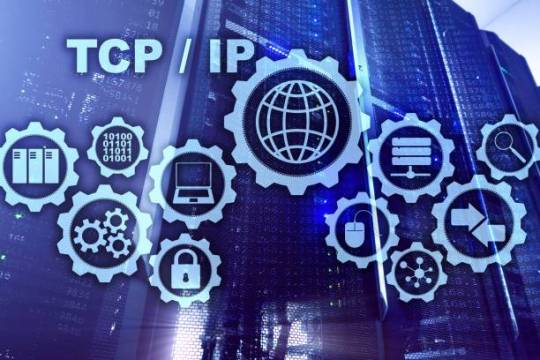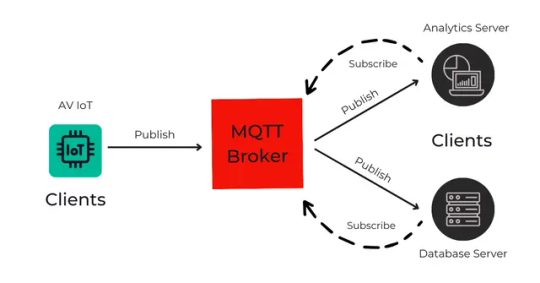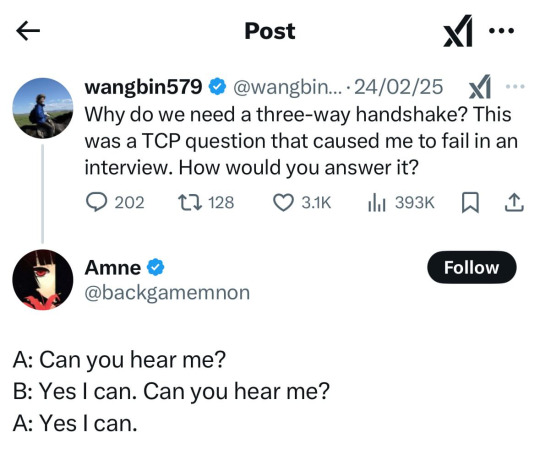#TCP/iP
Explore tagged Tumblr posts
Text
WEBCAST SEP 20 - Celebrating 50 years of TCP / IP with Vint Cerf and Bob Kahn
On Wednesday September 20 2023 at 7:30pm EDT (23:30 UTC) Google Global Networking and the American Institute of Physics Foundation are proud to honor Vint Cerf and Bob Kahn on the 50th anniversary of the TCP/IP protocols, the foundational technology of today’s Internet. The format will be a virtual fireside chat, moderated by journalist and author Katie Hafner, followed by a Q&A session. YOUTUBE:…

View On WordPress
1 note
·
View note
Text
youtube









youtube

youtube
#127.0.0.1#65xyz#255.255.255.254#10.0.1.255#~#Class:B#TCP/iP#MultiCast.arp#BroadCa*t :🆖:#SDLC#TLC#:🚾#TOR.Browe-*#O.Route-66 .pr'oto#BPD#ØttØ✔#➰#🔱#➿#♻#🔯#-⭕#.L🅾🅾p(FûnCtℹœŇ-äl[INT-3r🅿r8]∆.⏳--);#💰#🔭#🏧#🔬.💡>>[📗]#📘.🔦#📙.📡#🕯
1 note
·
View note
Text
Wireshark: Unravel the secrets of your network with this essential packet analyzer
Have you ever wondered what exactly is happening on your network? Do you want to understand how your devices communicate and how data flows? If so, you need to know about Wireshark! This powerful, open-source package analyzer is a must-have tool for anyone who works with networks. What is Wireshark? Wireshark is a protocol analyzer that allows you to capture and examine network traffic in…
0 notes
Text
A Review of 1969: A Year of Defining Moments, Month by Month
Apart from being my birth year, 1969 was a pivotal one, full of cultural, scientific, and political milestones that left an indelible mark on human history. Photo by Pixabay on Pexels.com I will take you along a journey through this year, one month at a time, highlighting a significant event from each. January: The Concorde’s First Flight On January 21, the Concorde, the world’s first…

View On WordPress
#1969#1969 Stonewall#ARPANET#dailyprompt#dailyprompt-2161#Internet#LGBT#LGBTQ+#Moon Landing#Raffaello Palandri#Solar Eclipse#Stonewall Uprising#TCP/IP#UNICEF#UNICEF Nobel Peace Prize#Woodstock
0 notes
Text

#standards#developer#tcp/ip#http#oauth#sql#html#css#ecmascript#iso#data#format#openapi#development#software#web#bytebytego
1 note
·
View note
Text
What Are the Key Components of Socket Programming?
Socket programming involves key components such as sockets, which establish endpoints for communication, and protocols like TCP or UDP. Other crucial elements include IP addresses and port numbers for identifying devices and services, socket functions for data transmission and reception, and error handling mechanisms to manage communication issues.
Read more :https://themediumblog.com/what-are-the-key-components-of-socket-programming/
0 notes
Text
Protocole TCP : qu'est-ce que c'est ?

Dans l'univers complexe des réseaux informatiques, la communication entre les différents systèmes et dispositifs repose sur des règles et des standards précisément définis, connus sous le nom de protocoles. Parmi ces protocoles, la Transmission Control Protocol (TCP) joue un rôle fondamental. Cet article se propose de dévoiler tout ce qu'il y a à savoir sur le protocole TCP, en explorant sa définition, son fonctionnement et son importance dans l'architecture des réseaux modernes.
Protocole TCP : définition
Le protocole TCP, acronyme de Transmission Control Protocol, est un protocole de communication fondamental utilisé dans les réseaux informatiques pour assurer la transmission fiable et ordonnée des données entre les ordinateurs. Il fait partie intégrante de la suite de protocoles Internet, souvent désignée par TCP/IP, où il collabore étroitement avec l'Internet Protocol (IP) pour faciliter le transfert de données sur le Web. TCP permet une communication bidirectionnelle, garantissant que les paquets de données sont livrés sans erreurs et dans le bon ordre. À travers un système de vérification des erreurs, de contrôle de flux et de gestion de la congestion, TCP optimise la fiabilité de la transmission des données. Ainsi, en établissant une connexion entre l'émetteur et le destinataire avant le début du transfert, il assure une livraison sécurisée et ordonnée, faisant de lui un pilier de la fiabilité sur Internet.
Protocole TCP/IP : schéma
Le modèle TCP/IP, qui inclut le protocole TCP, est schématiquement représenté comme une suite de couches où chaque couche a une fonction spécifique. TCP se situe à la couche de transport, juste au-dessus d'IP, qui opère à la couche réseau. Ce positionnement permet à TCP de prendre en charge les aspects liés à la transmission des données (comme la division en paquets et la réassemblage) tandis que IP gère l'acheminement des paquets à travers le réseau. Ensemble, ils forment la colonne vertébrale de la communication Internet.
Quel est le rôle du protocole TCP ?

Le rôle du protocole TCP va au-delà de la simple transmission de données. En assurant la fiabilité et l'ordre dans la livraison des paquets, TCP permet des applications telles que - Le courrier électronique - Le transfert de fichiers - La navigation Web, où la perte de données ou leur réception désordonnée pourrait être préjudiciable. De plus, TCP offre des mécanismes de contrôle de congestion, réduisant le risque de saturation du réseau, ce qui garantit une utilisation efficace des ressources réseau.
Protocole TCP ou UDP : quelle différence ?
La question du choix entre TCP ou UDP (User Datagram Protocol) se pose souvent dans la conception des applications réseau. Contrairement à TCP, UDP est un protocole plus simple, qui ne garantit pas la fiabilité ni l'ordre des paquets. UDP est donc privilégié pour les applications nécessitant une latence minimale, comme les jeux en ligne ou la diffusion de vidéos en temps réel, où la rapidité prime, sur la fiabilité.
Que permet le protocole TCP ?
Le protocole TCP permet plusieurs choses essentielles pour la communication réseau : - Fiabilité : grâce à la vérification des erreurs et à la gestion des accusés de réception, TCP assure que les données envoyées sont bien reçues et dans le bon ordre. - Contrôle de flux : il ajuste la vitesse d'envoi des données pour correspondre à la capacité du destinataire, évitant ainsi la surcharge. - Gestion de la congestion : TCP réduit son taux de transmission en cas de congestion du réseau, contribuant à maintenir des performances réseau optimales. Lecture associée : - Le protocole FTPS : sécuriser vos transferts de fichiers - Guide complet sur le protocole POP3 : optimisation et sécurité de la messagerie électronique - Guide complet du protocole IMAP : optimisez votre gestion d’e-mails - Guide complet du protocole SMTP : optimisez l’envoi de vos emails
Conclusion
Le protocole TCP est un élément vital de l'infrastructure Internet, assurant une communication fiable et efficace entre les dispositifs dans un réseau. Sa capacité à garantir la livraison correcte des données, couplée avec IP pour le routage, forme le fondement sur lequel repose une grande partie de nos interactions numériques quotidiennes. En maîtrisant les principes de TCP, on peut mieux comprendre comment les données naviguent à travers le vaste réseau qu'est Internet, soulignant l'ingéniosité et la complexité de la communication moderne. Laissez-nous également un commentaire ci-dessous pour partager vos pensées et vos expériences ! Read the full article
#communicationréseau#contrôledeflux#fiabilitéTCP#gestiondelacongestion#protocoleTCP#TCP/IP#transmissiondedonnées
0 notes
Text
Empowering EVs: How MQTT is Highly Abstracted for IoT Communication
The Internet of Things (IoT) has taken center stage in the rapidly evolving landscape of interconnected devices. Industries have transformed with the ability to share data over the internet seamlessly. Thus, utilizing the right communication protocol becomes one of the cornerstones of optimization. MQTT (Message Queuing Telemetry Transport) has emerged as the catalyst, outperforming traditional TCP/IP protocols. While TCP/IP is the most widely used internet communication protocol, it lacks some key capabilities required in IoT applications. In this blog, we’ll dissect the capabilities of MQTT, exploring how it influences the communication, efficiency, and performance of electric vehicles way more than TCP/IP protocols can.
TCP/IP: The Conventional Choice
TCP/IP, the foundational communication protocol of the internet, has played an indispensable role in connecting the world for decades. Its robustness and reliability have made it the go-to choice for various networking applications. However, when it comes to the unique demands of the Internet of Things (IoT), TCP/IP may not be the complete solution. TCP/IP relies on direct point-to-point connections, predominantly focusing on the accuracy of data transfer over the internet. Meanwhile, IoT requires protocols that efficiently handle many interconnected devices, often with limited resources. Thus, TCP/IP needs additional capabilities to make it suitable for the web of communication in EVs. Achieving the same level of adaptability offered by MQTT while building an application on TCP/IP is possible, although it will incur additional computational overhead and meticulous application design. Moreover, with the availability of a categorically designed protocol, engaging in building one seems redundant.
Why MQTT?
Electric vehicles represent the mobility innovation paradigm of the 21st century, filled with intricate systems comprising sensors, control units, and batteries. These systems require seamless information exchange with analytical and database servers via the Internet. Some critical decisions are made based on the data received from the vehicles, making infallible and efficient communication, often using limited resources, extremely vital. TCP/IP protocol does meet these requirements with design customizations. However, MQTT, the protocol in our spotlight, is custom-designed to cater to these exacting demands.
Let’s see how-
1. Real-time Data Flow: Harmonizing EV Communication
Visualize an EV as an orchestra of components—batteries, motors, sensors—all attuned to real-time performance. The data from this intricate system needs to be efficiently acquired and stored so that post-analytics, intelligent insights can be drawn from it. MQTT’s publish/subscribe model facilitates seamless bidirectional communication between vehicles and servers. A central MQTT broker hosts topics (data sources, in this case, EVs) and servers without direct links. Clients can subscribe to relevant topics, keeping communication fast and efficient rather than overloading with information. MQTT also keeps communication bidirectional, allowing servers to publish back to the topics when required.
2. Lean, Green, and Efficient
In the realm of EVs, efficiency is non-negotiable. MQTT protocol utilizes a shorter data packet compared to other protocols. Moreover, the data is stored as binary bytes, leading to a much smaller data footprint. This lightweight architecture minimizes computational overhead, conserving precious power drawn from the battery. It also keeps the servers clear from data overload.
3. Quality of Service (QoS): Precision Delivery
EVs demand precision in data transmission. MQTT offers three Quality of Service (QoS) levels—0, 1, and 2—that ensure data arrives exactly when required.
QoS 0 (At most once): This level ensures that messages are delivered but provides no acknowledgment or guarantee of receipt. It’s suitable for scenarios where some message loss is acceptable.
QoS 1 (At least once): This level guarantees that messages are delivered at least once but may be delivered multiple times. It suits applications where message duplication is acceptable, but message loss isn’t.
QoS 2 (Exactly once): This is the highest level of assurance, ensuring that messages are delivered exactly once. It’s suitable for applications where message duplication is unacceptable, such as critical control systems.
4. Adept with Multiple Data Types
With systems of various sensors, motor controllers, battery packs, and more, the data from EVs comes in all shapes, sizes, and formats. The communication must be adept with multiple data types to ensure the assured data communication from each system. MQTT currently offers a spectrum of data types ranging from two-bit and four-bit integers to UTF-8 string pairs.
5. Scaling for EV Fleets
The surge in electric vehicle fleets requires scalability. MQTT can seamlessly accommodate a flourishing array of vehicles and components because of its application layer architecture. The ease of setup and scale-up makes it an ideal choice for efficient fleet management. It adapts to your evolving needs, whether managing a handful of vehicles or an entire fleet.

Putting MQTT into Action
Let’s delve into a brief exposition of the level of abstraction the MQTT protocol offers within the context of electric vehicles.
1. Lightweight Design
TCP/IP is more resource-intensive than MQTT due to its comprehensive nature. While MQTT stores control units as binary bytes, TCP/IP uses bulky text strings. This extra resource consumption can affect the overall efficiency of EVs.
2. Data Reliability
While TCP/IP does provide reliability in data transfer, it may not offer the same flexibility and customization as MQTT regarding data delivery. Without QoS, the surety of re-transmission and loss-less data delivery becomes extremely tough and undesirable for EVs. Whether for battery management, charging control, or firmware updates, MQTT’s QoS guarantees reliability while maintaining communication efficiency.
3. Bidirectional Communication
TCP/IP intrinsically prevents servers from initiating communication and publishing messages. MQTT allows servers to initiate communication, increasing vehicle and server data flow flexibility and adaptability, enabling a list of additional services specific to EVs, like remote locking and unlocking.
4. Superior Data Handling Capability
Unlike MQTT, TCP/IP natively only supports ASCII characters. Although handling multiple data types can be achieved with TCP/IP, it may not be as effortless as MQTT. This capability empowers sourcing data from different devices in the EV.
5. Retained Messages
A retained message is stored in the broker with its corresponding QoS for the topic. Each client will receive this retained message as soon as it subscribes to that topic. Retained messages are essential in the EV domain, as some data points are critical for the vehicle’s health. This functionality of the MQTT protocol makes it stand apart from other protocols.
The Road Ahead for MQTT:
MQTT offers a compelling set of advantages for IoT-based communication, making it a preferred choice for many IoT deployments. As the electric vehicle landscape continues its steep ascent, MQTT will play an increasingly pivotal role. MQTT is the protocol of choice for EVs due to its lightweight design, real-time capabilities, efficiency, and scalability. Embracing MQTT will empower EV OEMs to optimize and streamline data transfer from edge to cloud, where efficient communication is key to success. Don’t stand on the sidelines— adopt MQTT today and position yourself at the forefront of the electric vehicle revolution.
0 notes
Text
What is TCP/IP and How Does it Work? 2023
TCP IP stands for Transmission Control Protocol Internet Protocol It is a set of communication protocols that are used to connect computers
0 notes
Text
youtube
0 notes
Text

a garden you never got to see
[ALT ID: A digital illustration of a man with his eyes closed and head tilted up toward the light. An embroidered red scarf is draped over his head and ghostly hands appear to be pulling on it.]
#the ascension to IP is skimmed over pretty lightly in tcp but it brings me joy to imagine callebero#stoned out of his mind and seeing ghosts#anyway i never know if ppl actually want the bg details on these things#but the gist is that red is associated with victory in arradine and one of anharad's (the founder of arradine who's believed to have been#the god of death incarnate) epithets is ~'scarlet-mantled'#which by the time of tcp (callebero's era) has created great discord in the historian community#between the camp that believes it's because she actually had red hair#and the camp that believes it's more like 'adorned by victory' and metaphorical#callebero is the second person to ever achieve that title#which was his maman's great dream#so all in all this is basically the ghost of his maman straightening the mantle of victory after callebero is crowned/etc.#my art#story: tcp#ch: callebero#ch: alir#at least in hallucination form!
4 notes
·
View notes
Text
fast forward a year from now (hopefully) when I'm taking the comptia security+ exam. anyone who reads my mind that day is just gonna hear the chant "a pussy so tight no dick penetrates" over and over again
#all the mnemonic devices out there for tcp/ip and it's only the crudest one that sticks in my brain#gitta.txt
5 notes
·
View notes
Text
Wireshark: Desentraña los secretos de tu red con este analizador de paquetes esencial
¿Te has preguntado alguna vez qué sucede exactamente en tu red? ¿Quieres entender cómo se comunican tus dispositivos y cómo fluyen los datos? Si es así, ¡necesitas conocer Wireshark! Este potente analizador de paquetes de código abierto es una herramienta imprescindible para cualquier persona que trabaje con redes. ¿Qué es Wireshark? Wireshark es un analizador de protocolos que te permite…
0 notes
Text
ah sim, os protocolos de redes de internet... SMT, FDP, VTNC, FDS, PPRT.... a internet é linda...
#qrevo.txt#estudando os protocolos de internet e como caralhos eu vou decorar todas essas letras#SMTP?? FTP?? TCP/IP?? não podiam ter dado nomes melhores??#vou escrever letras aleatórias e esperar que eu acerte um dos protocolos na sorte
6 notes
·
View notes
Text
Future-Proof Building Operations with NX-ERA Premium PLC Redundant Systems

In the domain of intelligent infrastructure, building intelligence is no longer a privilege but has become a requirement. Modern buildings, be it skyscraper business complexes, advanced healthcare institutions, or high-end hospitality centres function as living, breathing ecosystems. These types of buildings heavily depend on a Building Management System (BMS) to regulate HVAC, lighting, elevators, energy, and security systems.
Yet a single failure within the control system will bring these systems to a grinding halt, leading to operational disruption, safety hazard, tenant dissatisfaction, and regulatory non-compliance. This is where Messung's NX-ERA Premium PLC Redundant Systems, our state-of-the-art control solution for future-proofed infrastructure, come into play with their reliability, accuracy, and scalability.
Let us explore how NX-ERA provides intelligence, continuity, and scalability to your buildings through this blog.
The Evolution of Building Control Systems
Traditional relay-based control panels were able to handle building services in the past. Nowadays, buildings are far more advanced. Real-time data, multi-zone control, preventative maintenance, energy optimisation, and safety systems all require more intelligence.
Programmable Logic Controllers (PLCs) are the cornerstones of such a revolution. Although not all PLCs are alike.
The NX-ERA Premium PLC transforms building automation with a fail-safe, redundant design architecture that maintains your operations no matter what, and scales beautifully with your growing infrastructure.
Why Choose NX-ERA Premium PLCs?
Our NX-ERA platform is more than a PLC; it is an architecture that enables smart building management with unparalleled reliability.
Key Features:
Redundant Architecture: Two CPUs, two power supplies, and two communications modules offer zero downtime.
High-Speed Data Processing: Facilitates prompt decision-making between various sub-systems.
Remote Access PLC: Control, monitor, and troubleshoot anywhere.
Modular PLC Design: Flexible and scalable to project size and future requirements.
Intelligent PLC Capabilities: Sophisticated analytics, alarms, and diagnostics.
Built-in SCADA Integration: Integrated central control and visibility of the whole facility.
We have designed NX-ERA for round-the-clock use in the most demanding scenarios, starting from hospitals and IT parks to shopping malls and industrial clusters.
Application-Centric Design for Mission-Critical Infrastructure
In today's high-performance buildings, every system, air conditioning, lighting, fire detection, or security, has an important function to provide comfort, safety, and efficiency. Our NX-ERA Premium PLC is designed keeping this in mind. It is specifically made for use in mission-critical environments and allows for precise, continuous control of all major building services.
1.HVAC & Climate Control - NX-ERA provides advanced control of HVAC systems, controlling air conditioning, humidity, and ventilation with multi-zone precision. With open sensor integration, it provides condition-based automation, modulating airflow, temperature, and filtration in real time. This provides maximised indoor air quality and major energy savings, particularly in variable-occupancy buildings.

2. Lighting Automation - From programmed schedules to daylight-responsive dimming, NX-ERA regulates lighting between corridors and floors. It allows daylight harvesting by adjusting artificial lighting based on ambient conditions, saving energy without sacrificing occupant comfort. Smart lighting control also minimises operating costs and maximises fixture life.

3. Fire and Life Safety Systems - As a Safety PLC certified to operate, NX-ERA provides life-critical system support. It integrates with fire alarms, smoke detectors, and smoke extraction fans safely and reliably, with a timely response in case of emergencies. Redundant architecture ensures system availability even in the event of component failure.
4. Security & Access Control - NX-ERA controls security functions such as CCTV feeds, access readers, intruder alarms, and emergency lockdowns. It is fault-tolerant for access control and surveillance, even in the case of faults, with its dual-CPU design. Third-party system support provides seamless and scalable integration.

NX-ERA brings precision, resilience, and intelligent automation to every corner of your infrastructure, ensuring your building operates flawlessly, around the clock.
Constructing a Strong Framework with Redundant Design
NX-ERA’s architecture is designed around fail-safe principles:
Redundant CPUs are in hot standby, providing instant takeover if the primary CPU fails.
Duplicate Power Supplies provide a continuous power supply, avoiding shutdowns caused by voltage instability or failure.
Dual Communication Modules remove the threat of being disconnected from field devices or SCADA.
Programmable Logic Controllers provide deterministic behaviour and quick response times for real-time control.
This is the level of redundancy that must ensure the PLC Control Systems are single-point failure-proof and properly compliant with safety standards.
Smooth Integration with Building Ecosystems
NX-ERA is specifically designed for comprehensive, integrated control of building operations. Interoperability is its basis.
Native MODBUS TCP/IP communication for easy integration with third-party devices such as energy meters, smart sensors, HVAC devices, lighting panels, and fire safety devices.
It aggregates independent systems onto a single SCADA dashboard, providing a live view of all building services operating.
Remote diagnostics and centralised control enable facility managers to observe, investigate, and react to inefficiencies or faults from a central command centre—or any other location with secure access.
NX-ERA also supports seamless interaction with modern IoT systems like occupancy analytics, air quality monitoring, and asset tracking, making conventional buildings responsive, adaptive spaces.
Whether you are installing new infrastructure or expanding existing installations, NX-ERA keeps your architecture flexible, networked, and future-proof.
Real-Time Intelligence for Smarter Facilities
NX-ERA is not just a control system—it's a smart decision-making platform. Its data-driven performance offers real-time insights that raise operational effectiveness:
Offers high-resolution data logs for all parameters—temperature, voltage, energy consumption, etc.
Fully integrated with Energy Management Systems, supporting predictive load balancing, peak demand management, and actionable energy intelligence.
Generates predictive alerts for anomalies such as HVAC inefficiencies, equipment fatigue, or sensor deviations, helping prevent breakdowns before they occur.
Stores complete, tamper-proof logs that support regulatory audits and compliance with ISO standards, LEED guidelines, and other sustainability certifications.
With NX-ERA, facility managers can depart from reactive repair towards proactive, data-driven facility management.

Built to Scale, Built to Last
Growth and sustainability are the major pillars of the existence of any building. NX-ERA guarantees your automation system grows with your building while meeting environmental goals:
Modular structure allows you to add I/O points, add new subsystems, or accommodate newer technologies without redesigning the system.
Fully supports IoT-enabled smart metering, leak detection for water, predictive HVAC control, and occupancy analytics.
Facilitates LEED and green building certifications by maintaining constant energy audits, performance benchmarking, and real-time carbon footprint tracking.
Perfectly complements digital transformation initiatives, setting the stage for cloud analytics, AI, and automation-ready.
NX-ERA is your control companion, not just for today’s needs, but for tomorrow’s smart infrastructure vision.
Messung: Reliable Across Industries
For more than four decades, Messung has spearheaded India's industrial automation process with high-performance, dependable PLC solutions. NX-ERA Premium PLC is used in a broad range of mission-critical industries:
Data centres need constant uptime and exact environmental control.
Hospitals where life-saving equipment has to work without any failure.
Office towers with intricate lighting, HVAC, and elevator systems.
Residential high-rise buildings require energy efficiency and safety.
Plant operations where lost time equates to high operating costs.
Every NX-ERA deployment is backed by thorough testing, sophisticated lifecycle support, and intimate customer knowledge to deliver performance with confidence.
When to Upgrade to NX-ERA
Use NX-ERA if:
Your business requires no interruption of business.
You are grappling with legacy PLC failures or integration issues.
You're targeting PLC Automation for mission-critical sub-systems.
You need audit-quality logs to achieve ISO or LEED certification.
You're growing and require Remote Access PLC functionality.
NX-ERA is designed to fulfil your current requirements and long-term ambitions.
Conclusion: Join Messung for Uninterrupted Brilliance
In a world where building systems are designed to work flawlessly, learn intelligently, and expand seamlessly, your automation partner can be the difference-maker. At Messung Industrial Automation, we realise that infrastructure today requires more than control; it demands resilience, precision, and vision.
Our NX-ERA Premium PLC Redundant Systems reflect these principles. Not only do they provide fault-tolerant automation, but they also provide a complete platform for smart building management, enabling your infrastructure to react in real time, recover immediately, and adapt continuously.
Whether your business is a hospital, data centre, office complex, or intelligent residential complex, NX-ERA is your command centre that makes you never miss a beat.
Let's redefine what's possible, together.
Contact Messung Industrial Automation to see how NX-ERA can future-proof your plant with zero downtime, maximum intelligence, and permanent peace of mind.
Select NX-ERA. Select uninterrupted brilliance.
Frequently Asked Questions (FAQs)
Why would NX-ERA Premium PLCs be ideal for mission-critical buildings?
NX-ERA Premium PLCs are designed with two CPUs, power supplies, and communications modules, which render them zero downtime in case of failure. They are ideal for units where continuous operation is crucial, including hospitals, data centres, and business complexes.
Is NX-ERA compatible with existing building systems and legacy infrastructure?
Yes. NX-ERA is an open protocol-based based, such as MODBUS TCP/IP, and is capable of being integrated with third-party equipment, legacy control panels, and contemporary IoT-based systems and is extremely flexible for new and retrofit applications.
In what ways does NX-ERA support energy efficiency and green building goals?
NX-ERA includes integration with Energy Management Systems, daylight harvesting, and advanced energy analytics that minimise energy use and support the needs of green building certifications such as LEED.
For which industries and applications is NX-ERA best suited?
NX-ERA is tailored for various industries such as healthcare, manufacturing, commercial real estate, residential townships, and mission-critical infrastructure that need smart, high-availability automation.
Can NX-ERA be remotely monitored and remotely troubleshot?
Yes. NX-ERA allows secure remote access, with real-time monitoring, diagnostics, and command execution from remote locations, reducing response time and maintenance cost.
#NX-ERA Premium PLC#Building Management System (BMS)#Programmable Logic Controllers (PLCs)#Modular PLC Design#SCADA Integration#HVAC systems#Smart lighting control#Safety PLC#Duplicate Power Supplies#MODBUS TCP/IP#HVAC devices#modern IoT systems#Energy Management Systems#IoT-enabled#PLC solutions#NX-ERA Premium PLC Redundant Systems#MODBUS#healthcare#manufacturing#commercial real estate#residential townships#mission-critical infrastructure
0 notes
